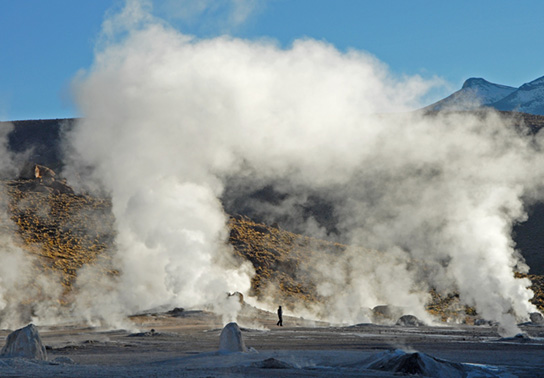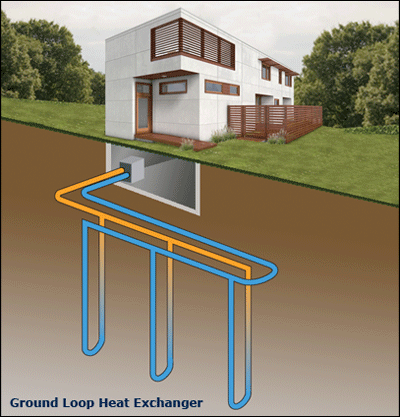What is geothermal energy? Simply put, geothermal energy is any naturally occurring heat source inside of the earth. The sources can range from hot water under the earth, hot rock found a few miles beneath the earth, or even heat energy the earth absorbs from the sun. On average, the earth absorbs 47% of the energy that comes from the sun. That’s 500 times more energy than we use in a given year. Harnessing this virtually untapped source of clean and sustainable energy is the entire purpose of geothermal energy systems.
In a geothermal system, heat energy from within the earth is used to heat your building in the winter and cool it during the summer months. Hot air removed from your home during the summer can even be used as energy to heat water!


How does geothermal energy work? A ground source heat pump is an electrically powered system that uses this stored energy of the earth to heat and/or cool a space. Geothermal heat pump systems consist of three parts: the ground heat exchanger, the heat pump unit, and the air delivery system (ductwork). The heat exchanger is a system of pipes called a loop, which is buried in the shallow ground near the building. A fluid (water or a mixture of water and antifreeze) circulates through the pipes to absorb or relinquish heat within the ground.
There are several types of ground heat exchangers that can be made to utilize geothermal energy, but they all fall under two basic categories, closed loop and open loop. If you have any questions about the differences between an open or a closed loop, they are described on the “Geothermal” page. Any further questions about how you can benefit from utilizing geothermal energy or geothermal energy sources, please contact us! We’d love to answer your questions.
Increase your savings and enjoy the certainty of having your own water and heating sources.
Like and Follow Us
We Use





